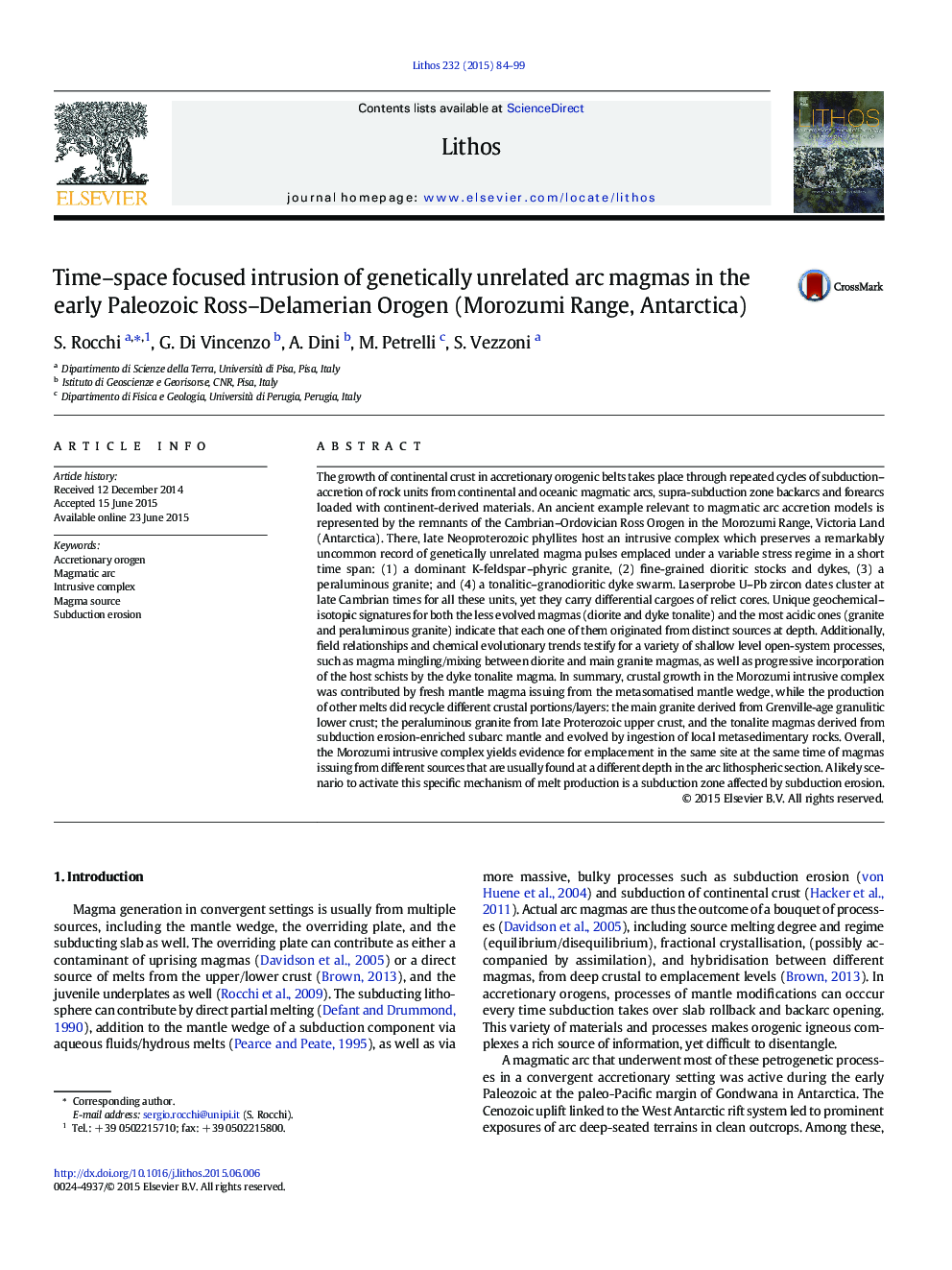| کد مقاله | کد نشریه | سال انتشار | مقاله انگلیسی | نسخه تمام متن |
|---|---|---|---|---|
| 6440660 | 1638659 | 2015 | 16 صفحه PDF | دانلود رایگان |
عنوان انگلیسی مقاله ISI
Time-space focused intrusion of genetically unrelated arc magmas in the early Paleozoic Ross-Delamerian Orogen (Morozumi Range, Antarctica)
دانلود مقاله + سفارش ترجمه
دانلود مقاله ISI انگلیسی
رایگان برای ایرانیان
کلمات کلیدی
موضوعات مرتبط
مهندسی و علوم پایه
علوم زمین و سیارات
ژئوشیمی و پترولوژی
پیش نمایش صفحه اول مقاله

چکیده انگلیسی
The growth of continental crust in accretionary orogenic belts takes place through repeated cycles of subduction-accretion of rock units from continental and oceanic magmatic arcs, supra-subduction zone backarcs and forearcs loaded with continent-derived materials. An ancient example relevant to magmatic arc accretion models is represented by the remnants of the Cambrian-Ordovician Ross Orogen in the Morozumi Range, Victoria Land (Antarctica). There, late Neoproterozoic phyllites host an intrusive complex which preserves a remarkably uncommon record of genetically unrelated magma pulses emplaced under a variable stress regime in a short time span: (1) a dominant K-feldspar-phyric granite, (2) fine-grained dioritic stocks and dykes, (3) a peraluminous granite; and (4) a tonalitic-granodioritic dyke swarm. Laserprobe U-Pb zircon dates cluster at late Cambrian times for all these units, yet they carry differential cargoes of relict cores. Unique geochemical-isotopic signatures for both the less evolved magmas (diorite and dyke tonalite) and the most acidic ones (granite and peraluminous granite) indicate that each one of them originated from distinct sources at depth. Additionally, field relationships and chemical evolutionary trends testify for a variety of shallow level open-system processes, such as magma mingling/mixing between diorite and main granite magmas, as well as progressive incorporation of the host schists by the dyke tonalite magma. In summary, crustal growth in the Morozumi intrusive complex was contributed by fresh mantle magma issuing from the metasomatised mantle wedge, while the production of other melts did recycle different crustal portions/layers: the main granite derived from Grenville-age granulitic lower crust; the peraluminous granite from late Proterozoic upper crust, and the tonalite magmas derived from subduction erosion-enriched subarc mantle and evolved by ingestion of local metasedimentary rocks. Overall, the Morozumi intrusive complex yields evidence for emplacement in the same site at the same time of magmas issuing from different sources that are usually found at a different depth in the arc lithospheric section. A likely scenario to activate this specific mechanism of melt production is a subduction zone affected by subduction erosion.
ناشر
Database: Elsevier - ScienceDirect (ساینس دایرکت)
Journal: Lithos - Volume 232, 1 September 2015, Pages 84-99
Journal: Lithos - Volume 232, 1 September 2015, Pages 84-99
نویسندگان
S. Rocchi, G. Di Vincenzo, A. Dini, M. Petrelli, S. Vezzoni,